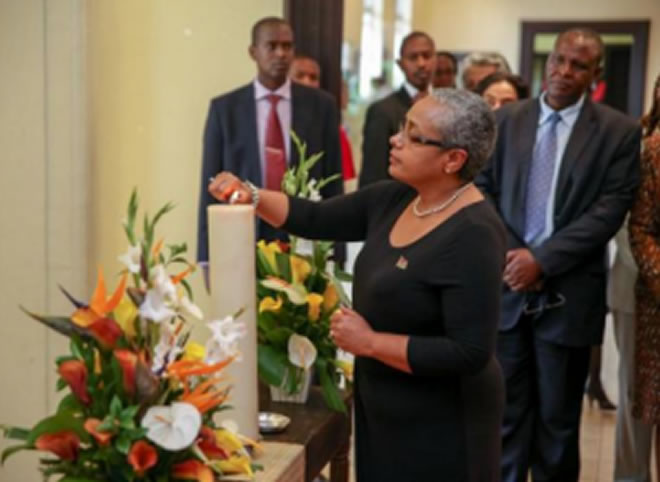
First Lady Margaret Kenyatta lights a candle at the Nairobi National Museum to commemorate the attack which left more than 67 people dead and 175 injured

Saturday, September 20, 2014
With the attack on the Westgate Shopping Mall a year ago this weekend, Somalia’s al Shabaab terror militia devastated Kenya’s longstanding image as an oasis of peace in the eastern, Great Lakes and Horn of Africa regions.
So formidable was this image in the years since independence that not even such events and episodes as the Shifta secessionist war of the 1960s, the Palestinian terrorist bombing of the Norfolk Hotel in December 1980, the abortive military coup of August 1982 and the al Qaeda bombing of the US Embassy in 1998 could dent it.
Only the post-election violence of December 2007-January 2008 came close to gaining Kenya a reputation as an unsafe destination for both visitors and investors. And even that was quickly surmounted by the National Accord pact and the formation of the Grand Coalition regime.
Even taken singly, the Shifta war killed many more people, as did the embassy bombing, the coup attempt and the PEV, but there was something about the raid on the mall, which killed 67 and injured 175, that captured the imagination and gave the horror a distinction that is all its own.
Like the Norfolk 33 years earlier, Westgate was one of the most prestigious and iconic addresses in Kenya. The Kenyan elite, including expatriate, shopped, wined and dined in Westgate outlets. When the suicide terror squad marched into the mall on Saturday September 21, 2013, guns blazing and grenades exploding, it caught hundreds of shoppers and the mall’s workers by complete surprise.
The National Intelligence Service would later insist that it had been aware an attack just like this one had been in the works for more than a year in both Nairobi and Mombasa. NIS also claimed it had notified all the relevant authorities who needed to know of the then imminent danger.
In the year since Westgate few Kenyans have enjoyed the shopping mall experience without a twinge of fear. There is the ever-present concern about what one would do if you heard automatic rifle fire and grenade blasts and you were in the middle of a mall doing your shopping, having a meal or a drink or even just in a cyber cafe.
The horror of what al Shabaab did on September 21, 2014, and the lumbering response of the Kenyan security forces, including KDF, will always be with those who survived the direct attack as well as those who merely received the news and analysis via multimedia journalism.
Westgate was followed by a stepped up campaign of grenade attacks in public places in Nairobi and a number of other urban centres, particularly in the northeastern frontier regions.
And then came Operation Sanitise Eastleigh and its countless complaints (never to a police station, always to the media) of violently extortionate policing.
And then the terror became politicized, with the Lamu massacres, all-night and all-day barbaric events in which attackers outgunned both home-guards and police and KDF had to be deployed yet again.
This has been a horrific year so far in terms of insecurity and of official responses and reactions to massively disruptive raids that have been anything but rapid and preventative.
The Westgate attack was one of those catalytic events by which grownups tell their young about the period before the event and the period after and what that boundary means, taking a cue from BC and AD.
The post-Westgate period has been a time of rearranging our worst fears – and hoping for the best. But it takes very hard work – and great integrity of personnel, software and hardware – to even begin to defeat terrorism.
A year after Westgate, Kenya is still taking baby steps on this long but essential journey.